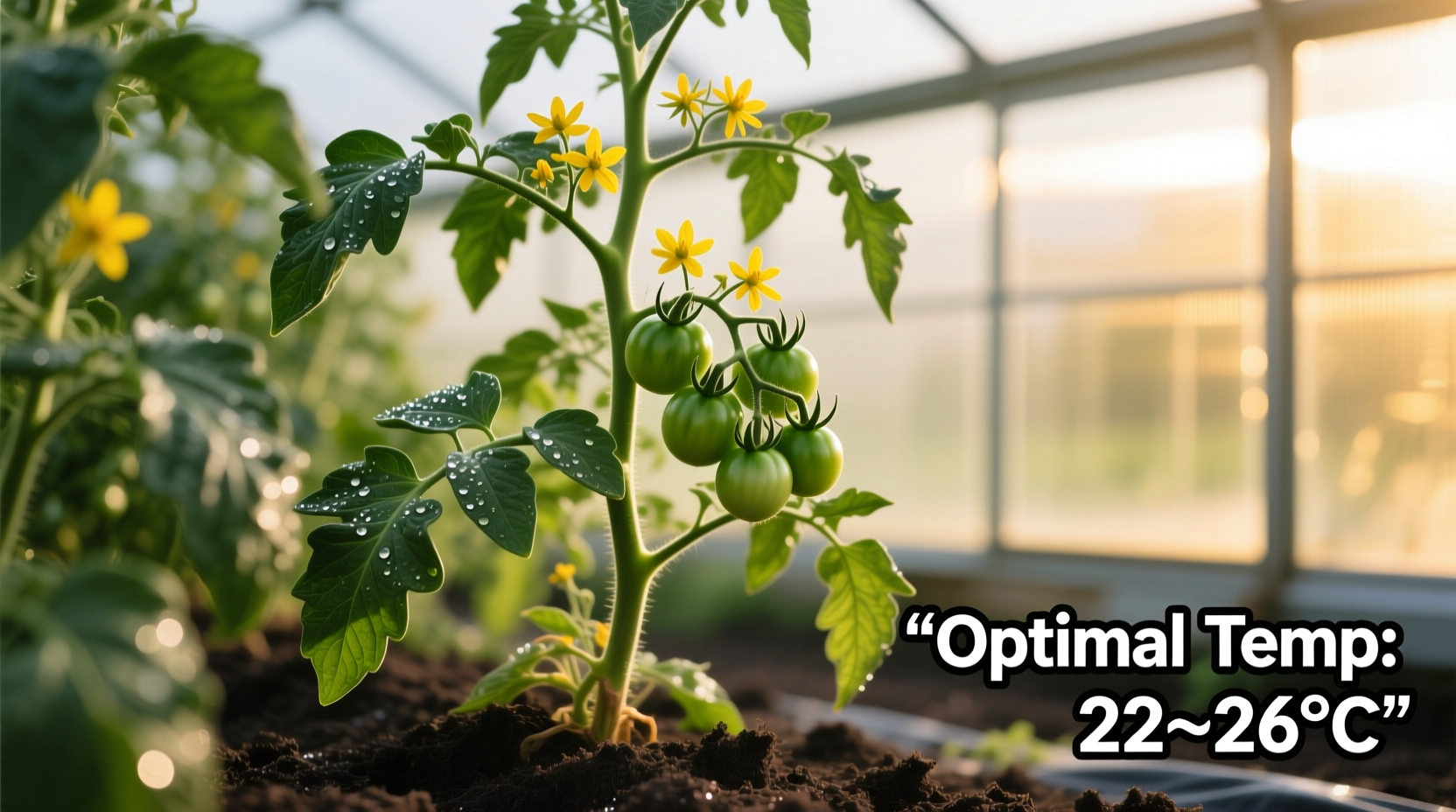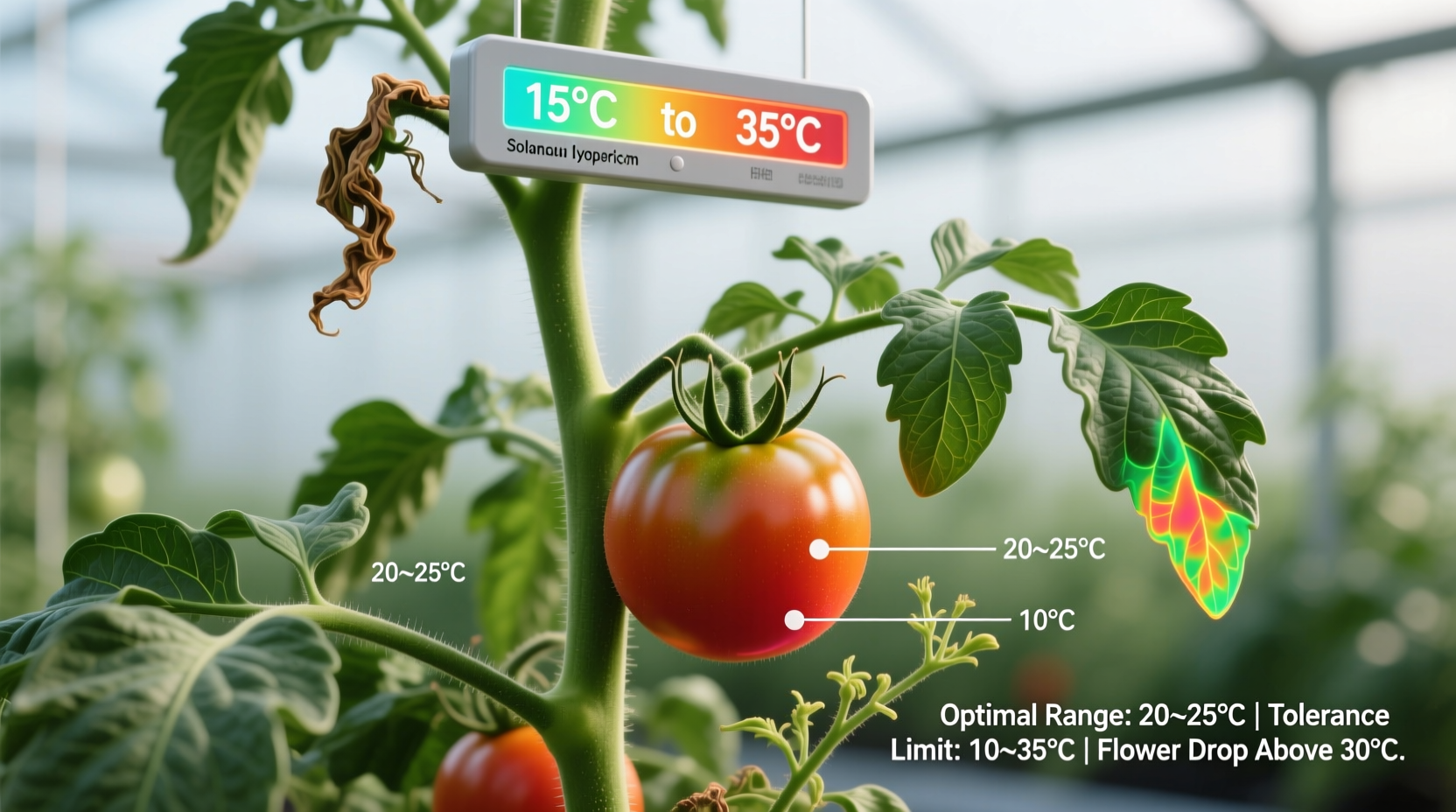Understanding tomato temperature tolerance is essential for gardeners seeking consistent harvests. Whether you're growing tomatoes in containers on a balcony or managing a backyard garden, knowing the precise temperature requirements can mean the difference between a bountiful yield and complete crop failure.
Why Temperature Matters for Tomato Plants
Tomatoes (Solanum lycopersicum) originated in the warm climates of South America, making them particularly sensitive to temperature fluctuations. Unlike many vegetables, tomatoes have specific thermal requirements that affect every stage of their development from seed germination through fruit ripening.
Temperature directly influences:
- Seed germination rates and speed
- Root development and nutrient uptake
- Flower formation and pollination success
- Fruit set and development
- Disease susceptibility
Optimal Temperature Ranges by Growth Stage
Tomato plants have different temperature needs depending on their developmental stage. Understanding these variations helps gardeners provide appropriate care throughout the growing season.
| Growth Stage | Optimal Day Temperature | Optimal Night Temperature | Critical Thresholds |
|---|---|---|---|
| Seed Germination | 75-85°F (24-29°C) | 65-75°F (18-24°C) | Below 50°F (10°C): Germination fails |
| Seedling Development | 70-75°F (21-24°C) | 60-65°F (15-18°C) | Below 45°F (7°C): Stunted growth |
| Vegetative Growth | 75-85°F (24-29°C) | 65-70°F (18-21°C) | Below 50°F (10°C): Reduced photosynthesis |
| Flowering & Fruit Set | 70-80°F (21-27°C) | 59-68°F (15-20°C) | Above 85°F (29°C): Pollen becomes nonviable |
| Fruit Ripening | 70-75°F (21-24°C) | 60-65°F (15-18°C) | Above 90°F (32°C): Lycopene production stops |
Source: Oregon State University Extension Service
Cold Temperature Effects and Protection Strategies
While tomatoes can survive brief exposure to temperatures as low as 40°F (4°C), prolonged cold causes significant problems. Chilling injury occurs between 32-50°F (0-10°C), damaging cell membranes and reducing plant vigor.
Cold stress symptoms include:
- Stunted growth and purplish discoloration of leaves
- Reduced flowering and fruit set
- Increased susceptibility to diseases
- Poor fruit quality and flavor development
Effective cold protection methods:
- Frost cloths: Use lightweight fabrics that allow light penetration while providing 2-5°F (1-3°C) of protection
- Wall o' Waters: Water-filled plastic sleeves that create a mini greenhouse effect around young plants
- Mulching: Apply organic mulch to maintain soil temperature and protect root systems
- Strategic planting: Position plants near south-facing walls that absorb and radiate heat
Heat Stress Management for Tomato Plants
High temperatures present different challenges than cold. When daytime temperatures exceed 85°F (29°C), tomato plants experience heat stress that affects reproductive development. Pollen becomes sticky and nonviable above 95°F (35°C), causing flowers to drop without setting fruit.
Heat stress symptoms include:
- Flower abortion and poor fruit set
- Leaf curling as a water conservation mechanism
- Sunscald on fruit exposed to intense sunlight
- Increased spider mite infestations
Effective heat management strategies:
- Afternoon shade: Use 30-50% shade cloth during peak summer months
- Mulching: Maintain consistent soil moisture with organic mulch
- Proper watering: Water deeply in the morning to cool root zones
- Strategic pruning: Maintain some foliage to shade developing fruit
Regional Growing Considerations
Successful tomato growing requires adapting to your specific climate zone. Gardeners in different regions face unique temperature challenges that require tailored approaches.
Cool climate regions: Focus on season extension techniques. Start seeds indoors 6-8 weeks before last frost date. Use black plastic mulch to warm soil. Choose early-maturing varieties like 'Stupice' or 'Siberian' that tolerate cooler conditions.
Hot climate regions: Select heat-tolerant varieties such as 'Solar Fire' or 'Heatmaster'. Plant for fall harvest when temperatures begin cooling. Provide afternoon shade and maintain consistent moisture levels.
According to research from University of Minnesota Extension, gardeners in USDA zones 3-5 should prioritize short-season varieties, while those in zones 9-11 need heat-tolerant cultivars with good disease resistance.
Monitoring and Managing Temperature Conditions
Accurate temperature monitoring helps prevent crop losses. Simple tools make a significant difference in managing microclimates:
- Digital thermometers: Place at plant canopy height for accurate readings
- Soil thermometers: Monitor root zone temperatures critical for nutrient uptake
- Max/min thermometers: Track daily temperature extremes
- Weather apps: Monitor forecasts for impending temperature extremes
When temperatures approach critical thresholds, take immediate action:
- Below 45°F (7°C): Cover plants with frost protection
- Above 85°F (29°C): Provide afternoon shade and increase watering frequency
- Above 95°F (35°C): Mist plants during hottest part of day (avoiding leaf diseases)

Choosing Temperature-Resilient Varieties
Selecting appropriate tomato varieties significantly improves success in challenging temperature conditions. Modern breeding has produced cultivars with enhanced temperature tolerance.
Cold-tolerant varieties: 'Glacier', 'Sub-Arctic Plenty', and 'Oregon Spring' mature quickly in cooler conditions. These varieties can set fruit at temperatures as low as 55°F (13°C).
Heat-tolerant varieties: 'Solar Fire', 'Heatwave II', and 'Arkansas Traveler' maintain fruit set at temperatures above 90°F (32°C). These varieties have been specifically bred for reliable production in hot climates.
Research from University of Illinois Extension shows that heat-tolerant varieties can maintain 60-70% fruit set at 95°F (35°C), while standard varieties may drop below 20%.
Practical Temperature Management Timeline
Follow this seasonal timeline to optimize tomato temperature conditions throughout the growing season:
- Early spring: Start seeds indoors at 75-80°F (24-27°C). Harden off seedlings gradually before transplanting.
- Late spring: Monitor overnight temperatures; protect plants until soil reaches 60°F (15°C).
- Early summer: Focus on maintaining consistent soil moisture as temperatures rise.
- Midsummer: Provide afternoon shade when temperatures exceed 85°F (29°C).
- Late summer: Remove excess foliage to improve air circulation and reduce disease risk.
- Early fall: Use row covers to extend the season as temperatures begin cooling.











 浙公网安备
33010002000092号
浙公网安备
33010002000092号 浙B2-20120091-4
浙B2-20120091-4